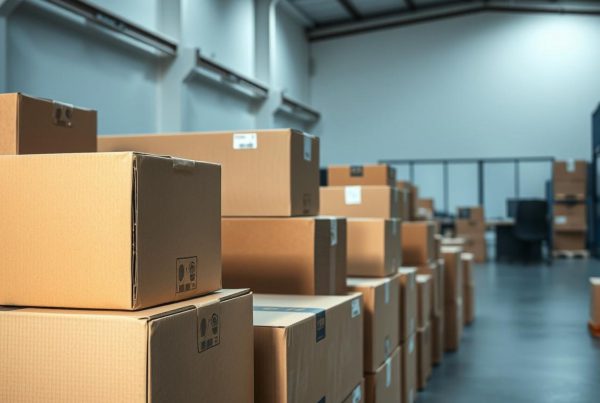How much does a cardboard box weigh?
When preparing for a move or shipping items, one question that often arises is, “How much does a cardboard box weigh?” While it may seem like a simple question, the answer depends on several factors, such as the type of cardboard used, the box’s size, and the thickness of the cardboard.
This article will delve into each of these aspects, focusing on the weights of different types of boxes, such as the flat box and boxes made from corrugated cardboard or kraft paper.
The Material: A Major Determinant
The weight of a cardboard box is significantly influenced by the type of material it is made from. Below, we delve into some common materials used in box-making and how they impact the box’s weight.
- Flat Boxes: Flat boxes are typically made of single-wall corrugated cardboard. Due to their construction, these boxes are lightweight yet strong, making them suitable for shipping a wide range of items. While the exact weight can vary based on size, a standard flat box can weigh anywhere between 170 to 200 grams.
- Corrugated Cardboard Boxes: Corrugated cardboard is a sturdy material made from three layers of brown kraft paper. This type of box offers excellent protection for shipped goods due to its durability and strength. Corrugated cardboard boxes typically weigh more than flat boxes due to the added layers of material. A medium-sized corrugated box might weigh around 500 grams, but this can vary based on size and thickness.
- Kraft Paper Boxes: Boxes made from kraft paper are lightweight and environmentally friendly. Kraft paper, renowned for its strength and durability, results in boxes that are both practical and aesthetically pleasing. A medium-sized kraft paper box might weigh around 150 to 180 grams.
Size and Thickness Matter
Aside from the material, the size and thickness of the cardboard also play a crucial role in determining the weight of a box. Here’s a simple comparison:
| Box Size (inches) | Average Weight (grams) |
| 6 x 6 x 6 | 120-150 |
| 12 x 12 x 12 | 200-250 |
| 18 x 18 x 18 | 300-350 |
| 24 x 24 x 24 | 400-450 |
Remember, these are rough estimates, and actual weights may vary based on the specific box materials and their thickness.
Further Breakdown: How Box Construction Affects Weight
Now that we’ve looked at the basic factors influencing the weight of a cardboard box, let’s delve deeper. It’s essential to understand the construction process behind each type of box, as it directly impacts the box’s weight and strength.
Flat Boxes
Flat boxes are typically used for shipping flat or slim items, like books or clothing. They are made of a single layer of corrugated cardboard, which makes them lighter than their multi-layer counterparts.
The manufacturing process involves bonding a fluted or arched layer to a flat layer of cardboard, resulting in a robust yet lightweight structure. Despite their lightness, flat boxes offer considerable strength and protection, preventing any damage to the contents during shipping.
Corrugated Cardboard Boxes
Corrugated cardboard boxes are some of the most commonly used types of boxes for shipping and storage, due to their durability and versatility. The construction process involves a fluted or arched layer of cardboard sandwiched between two flat layers. This design provides excellent rigidity, making these boxes suitable for heavy items.
Due to the additional layers of cardboard, these boxes tend to weigh more than flat boxes. However, the increased weight is a small trade-off for the superior strength and protection they provide.
Kraft Paper Boxes
Kraft paper boxes are popular for their lightweight design and eco-friendliness. Made from wood pulp through the Kraft process, these boxes have high tensile strength despite their lightness. The Kraft process removes the lignin, a component that can weaken the paper. The result is a strong, lightweight box that is perfect for light to medium-weight items.
The Role of Box Dimensions
The dimensions of a box, including its length, width, and height, also play a significant role in determining its weight. Larger boxes require more material for their construction, which naturally increases their weight.
For instance, a small 6 x 6 x 6-inch box may only weigh around 120 to 150 grams, while a larger 24 x 24 x 24-inch box could weigh as much as 400 to 450 grams. Remember, these figures can vary based on the type of material used and its thickness.
Conclusion
As you can see, the weight of a cardboard box is influenced by a variety of factors, including the type of material used, the box’s size, and the thickness of the cardboard. By understanding these factors, you can make more informed decisions when it comes to shipping and handling costs or when choosing the right box for your packing needs.
Regardless of whether you’re using flat boxes, corrugated cardboard boxes, or Kraft paper boxes, knowing the approximate weight of your box can prove extremely useful. It can help you estimate shipping costs, understand how much weight your box can handle, and ultimately, choose the right packaging solution for your needs.
About the Company
The Boxery is your go-to source for all things packaging and shipping. With a wide array of products, including flat boxes, kraft paper, and corrugated cardboard, we strive to meet all of your packing needs. Our mission is to provide our customers with quality products and excellent customer service. With our knowledge and expertise, we can help answer all of your packaging-related questions, including the often-asked, “How much does a cardboard box weigh?” So, the next time you’re in need of packing supplies, look no further than The Boxery.





Recent Comments